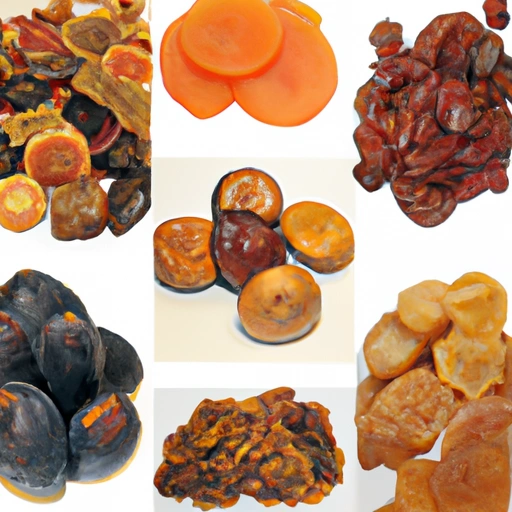Dried Fruit
Description

Dried fruit is a type of fruit from which the majority of the original water content has been removed either naturally, through sun drying, or through the use of specialized dehydrators or dryers. The drying process concentrates the fruit's natural sugars, making it a sweeter, longer-lasting, and portable snack. Dried fruits are popular ingredients in a variety of recipes, offering a convenient way to add natural fruit sweetness and texture to dishes. With a broad range of options including raisins, apricots, figs, dates, and more, dried fruits are enjoyed in both sweet and savory applications worldwide.
Common uses
Dried fruits are commonly used as a snack, mixed into trail mix, and added to cereals, granola bars, and baking goods. They are also incorporated into savory dishes like stews, tagines, and meat dishes to provide a hint of sweetness and texture.
Nutritional value
Calories
Dried fruits are calorie-dense, with about 85 calories per 1/4 cup (40 grams/1.4 ounces) serving on average.
Protein
They contain a modest amount of protein, with roughly 1 gram per 1/4 cup serving.
Fat
Dried fruits typically have minimal fat, with less than 0.5 grams per serving.
Carbohydrates
They are high in carbohydrates, primarily from natural sugars, with around 22 grams per 1/4 cup serving.
Vitamins
Dried fruits are rich in vitamins such as vitamin A in dried apricots and vitamin C in dried citrus fruits.
Minerals
They provide essential minerals including potassium, iron, and calcium.
Health benefits
Dried fruits offer health benefits such as improved digestion due to their dietary fiber content, a reduced risk of certain diseases thanks to their antioxidants, and vital nutrients that support overall health. However, moderation is key due to their high sugar concentration.
Potential risks
Overconsumption of dried fruits can lead to excessive calorie intake, potential weight gain, and can affect blood sugar levels due to their high sugar content. Some dried fruits may also contain added sugars or preservatives, which can be a concern for some individuals.
Common recipes
They are featured in fruitcakes, cookies, compotes, and as toppings for salads and cereals.
Cooking methods
Dried fruits can be stewed, baked, or simply used to garnish and enhance dishes.
Pairing with other ingredients
They pair well with nuts, cheeses, and meats, balancing flavors in sweet and savory dishes.
Summary
Dried fruit is a versatile and nutritious ingredient that adds sweetness and depth to a variety of global recipes. It has been a staple in human diets for millennia, valued for its preservation qualities and health benefits. Whether used in baking, cooking, or as a snack, dried fruits are a delightful addition to any culinary creation.